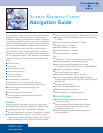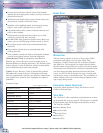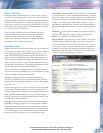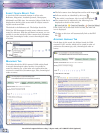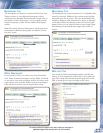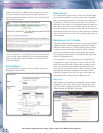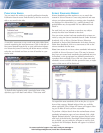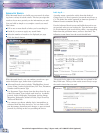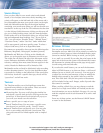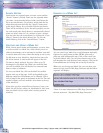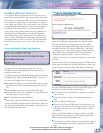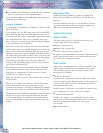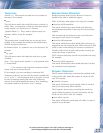
For technical support 24 hours a day, 7 days a week, call 1-800-877-GALE (option 4)
12
■
Click Insert Section Heading to optionally add a subhead-
ing title to group one or more InfoMark items.
Note: You may add up to 50 InfoMarked items and Section
Headings to your Web page.
Using an InfoMark
If you created an InfoMark as a bookmark or shortcut, sim-
ply click the link.
If you created your own Web page using the InfoMark Web
Page Generator, open the saved Web page: Start your brows-
er, and then use the “Open” command to open the file name
you saved (default file name is scirc_infomark_web_page.
htm, unless you re-named it). Or click the link that appears
in the attachment if you e-mailed it.
Note that you and your students don’t need any additional
software than what you probably already have on your com-
puter to view and use the InfoMark Web page you created.
However, anyone who uses an InfoMark must have access to
the product from which the InfoMark came. Users who have
access to some Thomson Gale products but not the product
from which the InfoMark came will see the following
message: “The InfoMark specifies a database that is not on
your current subscription list.”
As well, keep in mind that successfully using an InfoMark
starts a Science Resource Center session. Even if the link
simply goes to a document, all Science Resource Center
resources are available to the user.
Note: For InfoMarks to work, your browser must be set to
accept cookies.
When you or someone else visits your InfoMarked search
results, your search is run anew against the current
contents of the database. You may get additional or updated
information than when you originally performed the search.
Documents that are InfoMarked should be reasonably stable,
but the list of sources and negotiated rights (for text and/
or full content display) in a collection can change without
notice. It’s a good idea to verify your saved links from time
to time.
ADDITIONAL HELP
Further help using InfoMarks, including a guided tour,
FAQs, and case studies, is available at our web site www.
gale.com .
For more information on how to use InfoMarks, click the
icon from within Science Resource Center or refer to the
Web site www.galegroup.com/infomarks.
SEARCH STRATEGIES:
SEARCH TERMS
The more search terms you add, the more precise your
search results will be. For example:
■
human (results=18,125)
■
human body (results=411)
■
human body and disease (results=49)
Be specific! If you want information about water amusement
parks, enter all those terms in your search rather than just
the word water or amusement parks.
PUNCTUATION
Ampersand—An ampersand (&) is NOT recognized by the
search engine and should not be included in your search.
The proximity operator, W, can be used in place of the
ampersand. For example:
■
A W1 P (not A&P)
Capitalization—Capitalization does not affect your search
since the search engine is not case sensitive. That means that
a search on Thomas Alva Edison and thomas alva edison
will return the same results.
Double Quotes—Use double quotes when you want to find
your search term as an exact phrase. For example:
■
”metric conversion table”
Hyphen—If a hyphen (-) is considered to be part of the
search term, include the hyphen when you key in your term.
The search engine will recognize it in your search.
For example:
■
twentieth-century



